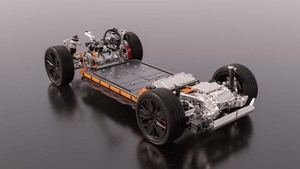Keeping your fleet running during these unprecedented times is essential. Below are a few tips to ensure fleet continuity, helping to reduce operating costs and keeping your drivers safe.
1. Consider extending your contracts
Applicable to vehicles coming to the end of their contract, an informal contract extension would enable vehicles to be extended on a month-by-month basis during these uncertain times. This delivers flexibility at the current lease and maintenance cost, without any disruption for your drivers.
Your Leasing Company will offer support to your business and, rather than returning vehicles at the end of contract and replacing them, you should consider asking your leasing company for informal or formal vehicle contract extensions.
If you are able to commit to short term, formal extensions of typically six or 12 months should be considered. This provides ongoing monthly budgeted costs for both finance and maintenance costs. As contracts are being extended over a longer term, monthly rentals are reduced. This approach is likely to be supported by your leasing company due to continuity of income.
It is also worth considering that if you have a matrix in place keep in mind the individual LeaseCo maximum parameters and if exceptions can be granted.
2. Consider a contract re-write
Major savings may be available from re-writing contracts based on accurate actual mileages for each driver. This is particularly relevant to fleets still writing contracts on benchmark parameters.
As an example, fleets that typically operate on a 36 month/30,000 km per annum contract, but drivers may only be driving 20,000 km a year. By reducing the contract mileage to 20,000 km per annum, this will result in lower costs to the leasing company, meaning lower rentals and maintenance costs to your company. During this lockdown period, the mileage of many vehicles may be even further reduced this year.
Identify those under-mileage drivers and the contracts that can be re-written, as the savings can be considerable. This applies even in a pooled mileage situation where contracts can be rewritten to reduce any overall surplus in fleet mileage.
It could be worthwhile extending a contract duration to 48 months to assist financially.
Some LeaseCo’s are becoming more flexible on maintenance intervals as workshops close or are working on a reduced workforce.
A drop in mileage during this quarantine period should also be factored into any discussion you may have.
Related articles
Coronavirus and the fall in CO2
3. Avoid early terminations
Early terminations incur a penalty charge so should be avoided if at all possible. If no other solution can be found, return vehicles close to the end of their contracts to minimise the charges. Investigate, if possible, re-allocating or swapping vehicles to different parts of the business, or between drivers, to avoid these potentially punitive charges.
4. What about short or mid-term rentals?
Currently, rental vehicles are classed as an essential service and provide the ability to source vehicles quickly if needed. Key services are prioritised so turnaround times may be affected unless your business falls into this category.
If there are now surplus vehicles on your fleet, consider returning short-term rental vehicles first. They offer flexibility; however, they also represent an often more expensive mobility option and can usually be returned without penalty.
For instance, where there are new employees, who may be waiting for delivery of their company car, look to surplus pool vehicles first or to leased vehicles near their contract end date, as these may be informally or formally extended as described above.
5. Look at your fuel bills
At the time of writing, world oil prices and fuel cost is decreasing. This is a good time to renegotiate fuel prices being paid, especially fuel that is being bought in volume.
Fuel is the largest day-to-day operating cost on the company fleet and often businesses lack control over the price paid. Even supermarket pricing, typically the cheapest retail purchasing opportunity, can be more expensive than a negotiated corporate deal on a set weekly rate directly with the source. It is worth investigating options.
For fleets with fixed-term fuel contracts, or in the process of tendering for them, different options, such as hedging or capping which are typically relevant to large commercial fleets, could provide certainty over fuel spend and help when projecting costs over a fixed term. Hedging is a contractual tool that large fuel-consuming fleets can use to reduce their exposure to volatile fuel prices.
6. Vehicle servicing, maintenance and MOTs
It is important to ensure that vehicles are maintained, serviced and MOT’d for driver and public safety, and in line with manufacturer warranties to preserve cover. However, some countries are allowing exemption for MOT testing. This clearly allows essential workers to carry on and travel and to help stop the spread of Covid-19. However, vehicles must still be kept in a roadworthy condition.
Reminders should be setup to ensure drivers carry out required servicing or MOTs when normal conditions arise and adhere to duty of care obligations.
Drivers should be aware the MOT suspension does not mean the law governing the minimum legal tread depth of 1.6mm has also been suspended.
What about your drivers?

At the time of writing there are over 40,000 deaths as a result of Coronavirus. Where possible, most companies are limiting any form of travel. However, there are some essential workers and services that still need to continue with drivers behind the wheel.
- When taking over a vehicle from a colleague disinfect all high-risk touchpoints, such as door handles, steering wheels, mirrors, seats and seatbelts plus any other surfaces. Take sensible and routine precautionary measures such as cleaning surfaces regularly with sanitising wipes or spray
- Fuel pump handles have been identified as high-risk touchpoints, so customers have been advised to use gloves while filling their vehicle and to wash their hands thoroughly as soon as possible after leaving
- If delivering to a customer’s address there should be a set drop off point established in advance, such as the door step. You must ensure you have a system in place to enable the customer to notify you of any self-isolation/illness in advance of delivering. Drivers should not enter the customer’s property in any circumstance. Avoid physical contact, including signing for paperwork for deliveries.
Now more than ever, should your drivers regularly check all levels in their vehicle.



